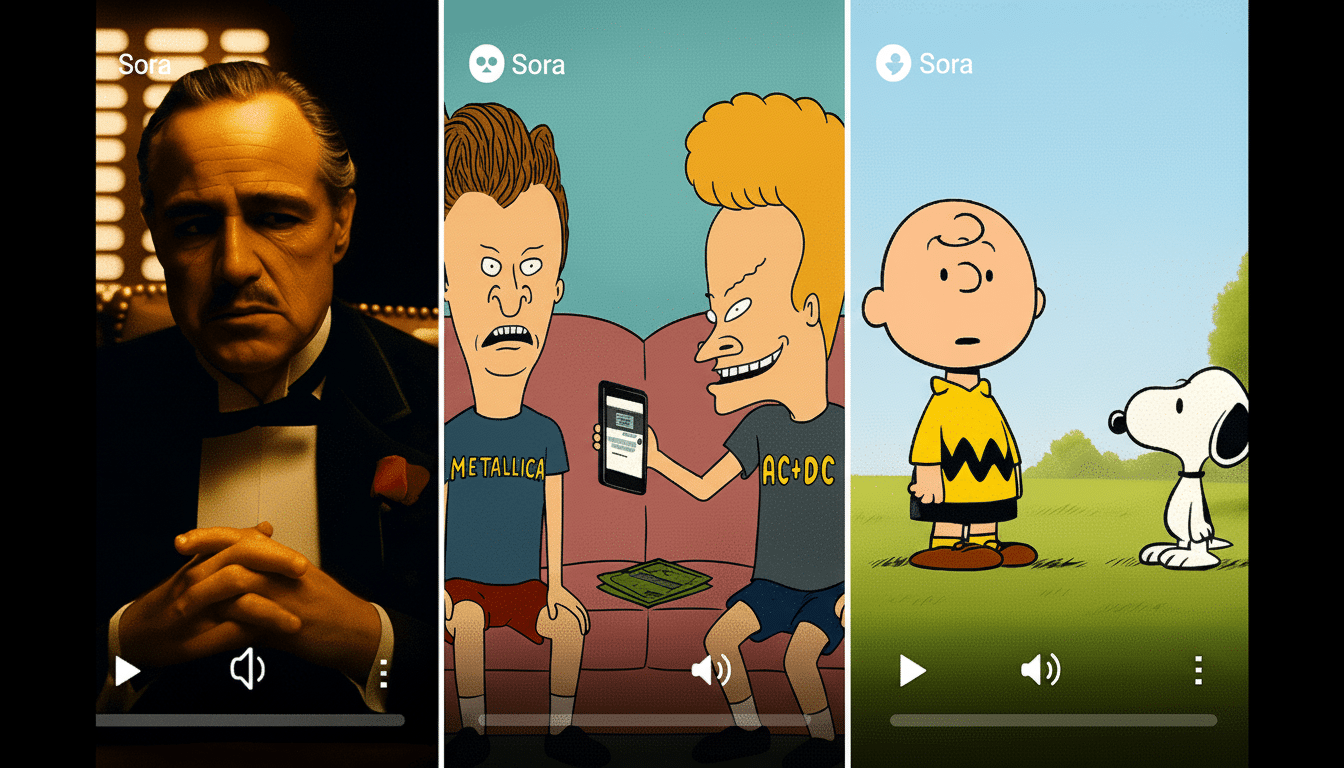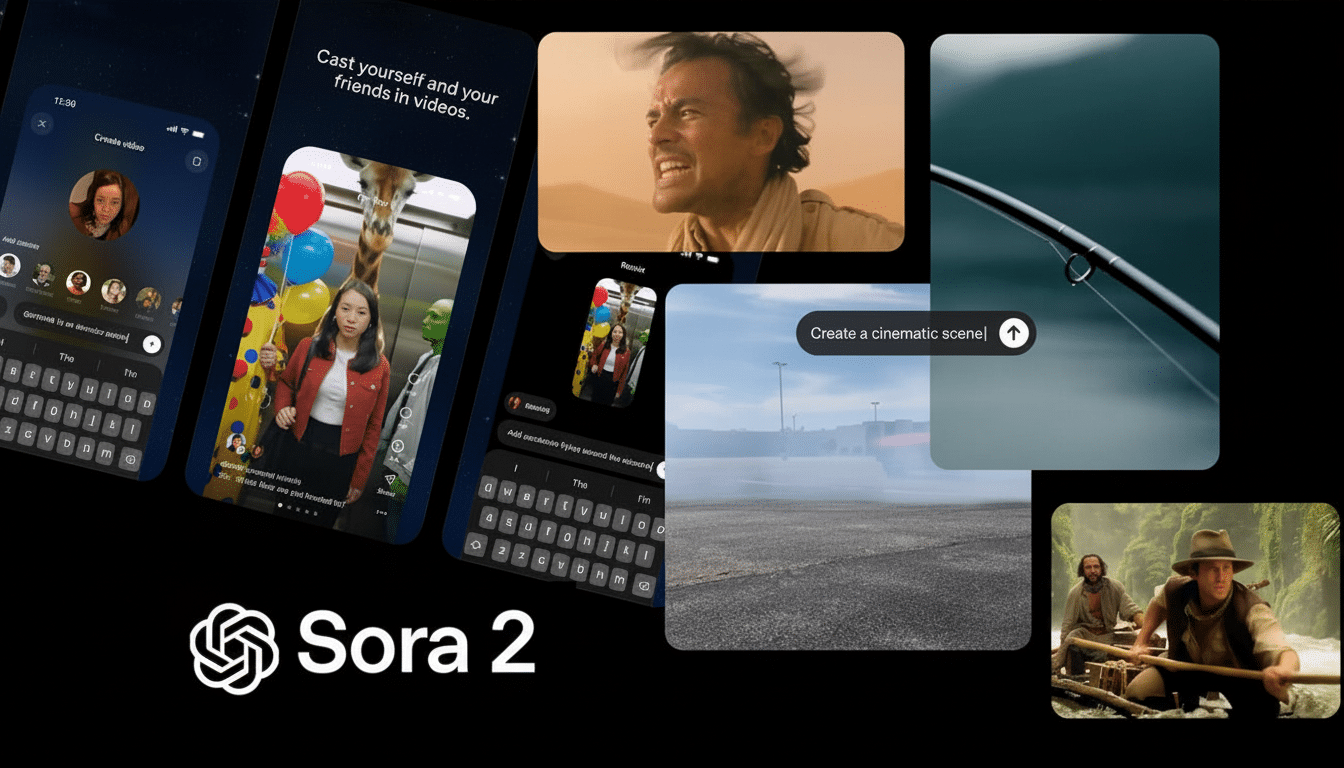OpenAI’s Sora 2 has skyrocketed to the top of Apple’s free app chart, an overnight ascent driven by a rare combination of breakthrough capability and calculated scarcity. The iOS-exclusive release is making some big promises including text-to-video generation with audio, social remixing, and even the option to put yourself inside scenes — and those features are driving demand typically reserved for hit games or viral social platforms.
Why everyone wants in on Sora 2’s invite-only iOS debut
Sora 2 arrives at a time when short-form video consumes attention, but high-quality production is costly. By turning a prompt into a styled clip — cinematic, animated, and surreal — complete with sound, Sora lowers the creative lift to a few taps. It is a tantalizing promise for creators, marketers, educators — anyone thirsting for attention in feeds.
- Why everyone wants in on Sora 2’s invite-only iOS debut
- What Sora 2 changes under the hood for video creation
- The scarcity strategy that fuels Sora 2’s rapid growth
- Current access model and pricing details for Sora 2 users
- What creators are making with Sora 2 in early demos
- The guardrails and the highway ahead for Sora 2 rollout

The app’s social layer is just as important as the algorithm. Users can share their creations and remix other people’s clips, a loop that has historically fueled explosive growth for media tools. App intelligence firms like Data.ai and Sensor Tower have pointed out that apps that top the U.S. App Store’s free chart have a big advantage when it comes to in-store visibility, begetting a self-perpetuating cycle of discovery and installs.
What Sora 2 changes under the hood for video creation
OpenAI released the original Sora early in 2020 and later opened access through the web. The iOS app comes with a second-generation edition that’s equipped for more sophisticated scene dynamics, tighter audio-visual sync, and longer, more coherent sequences. In OpenAI’s framing, going from Sora to Sora 2 is like a generational leap in capability — more robust reasoning about motion, physics, and continuity rather than isolated “cool shots.”
It’s accompanied by practical tools as well: customizable duration and aspect ratios, storyboard-style refinement, voice or effects that work with on-screen action. The killer feature is personalization — putting you or friends into footage — and this takes Sora 2 from a generic generator to a personal media studio.
The scarcity strategy that fuels Sora 2’s rapid growth
For now, Sora 2 is invite-only, a bottleneck that’s given birth to a cottage industry of code hunting on Discord servers, Reddit threads, and creator communities. We have seen this playbook before: scarcity has helped apps like Clubhouse convert curiosity into cultural momentum. It also lowers compute costs as the model scales and its safety systems are tuned, a kind of balancing act typical in AI rollouts.
Scarcity fuels social proof. When access is restricted, clips shared by those inside the gates double as marketing for those yet to gain entry, particularly when remixes and duets make the rounds on TikTok, Instagram, and X. The result: a queue that grows even as access remains gated.
Current access model and pricing details for Sora 2 users
OpenAI says the initial rollout serves the U.S. and Canada, and that other regions are coming soon. Invited users can also log into Sora 2 through the web, and the company says the app will begin for free initially with generous limits based on compute availability. An experimental Sora 2 Pro model is out for power users who are ChatGPT Pro subscribers via the web, and its arrival in the app is pending.

That tiering is notable. It is an avenue toward sustainable economics — free exploration to build a user base, premium tiers to defray heavy lifting — that aligns with the way plenty of generative tools have weighed consumer excitement against cloud costs. It also establishes the expectation that access may waver as usage spikes.
What creators are making with Sora 2 in early demos
Early demos feature the equivalent of fast-cinematic shorts, animated explainers, and surreal vignettes that might have needed an entire small production team just a year ago.
Music producers are trying out mood-driven visuals for teasers, indie game developers are prototyping cutscenes, and marketers are running different ad mockups in a handful of styles before signing off on full shoots. The throughline: quick iteration takes the place of protracted preproduction.
The customization option in particular is sticky. By putting yourself into a scene — walking through a sci-fi market, playing the lead in a silent-era comedy — it generates uniquely shareable clips that travel even further than generic outputs. And that virality is a sort of built-in acquisition engine for the app.
The guardrails and the highway ahead for Sora 2 rollout
As with all effective media models, the focus is on provenance and safety. Other industry groups, including the Partnership on AI, have pushed for clear disclosure when content is synthetic, and several AI developers are doing experiments and research around watermarking and C2PA-style provenance metadata. Look for policy updates and further trust signals as Sora 2 grows into other regions and use cases.
The big questions at this point: how fast the invitations go out, what the Android and global rollout timelines look like, and whether OpenAI can sustain quality as its user base quickly expands. Toppling the App Store for now represents a breakout moment for text-to-video on mobile — and, in retrospect, the reason so many people are scrambling for a code.

